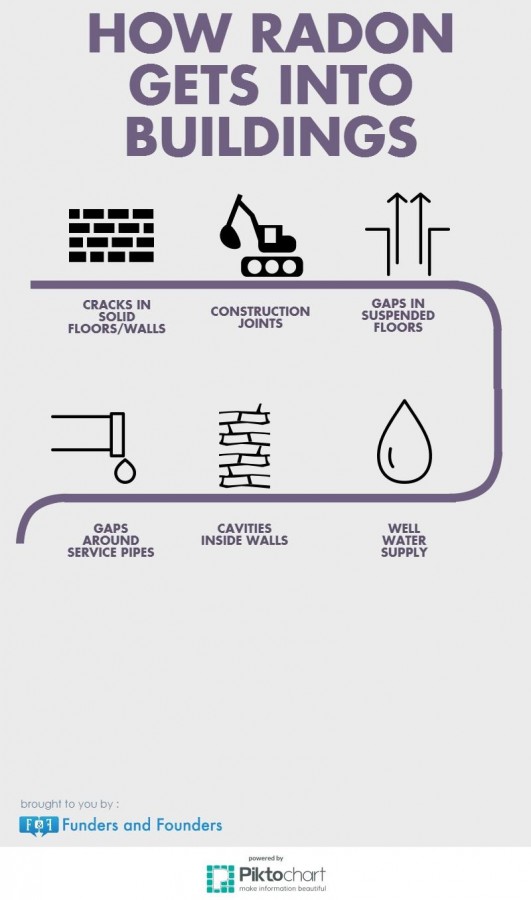Radon Levels Exceed Limits in 28 MCPS Schools
Infographic by Nathan Deychman
MCPS has recorded higher amounts of radon in some schools than recommended by the EPA. Radon, an odorless, tasteless and colorless gas, can seep into schools and potentially cause lung cancer.
January 5, 2016
Dangerous levels of radon have been discovered in 28 MCPS schools.
Radon is an odorless, tasteless and colorless gas that can cause lung cancer. It often seeps into buildings through cracks in the foundation.
According to the Environmental Protection Agency (EPA), radon levels should not exceed four picocuries per liter (pCi/l).
While CHS radon levels are only 1.4 pCi/l, some schools in MCPS have radon levels as high as 11.9 pCi/l.
“As we move forward, I have directed our Chief Operating Officer to conduct a review of what occurred in these 28 cases, as well as a comprehensive review of our overall radon testing program to strengthen our protocols going forward,” Interim Superintendent Larry Bowers said in a Dec. 6 statement to the media.
Although scheduled retesting is underway for the schools with elevated radon levels, the initial tests were conducted over three years ago.
According to a Dec. 7 article by the Washington Post, since so much time has passed since the initial testings, all 202 schools in the MCPS system will be retested, but the focus will still remain on the mitigation of the radon in the schools with high levels already detected.
Although the county will not be remodeling any schools due to the issue, MCPS is acting to extract the radon as quickly and efficiently as possible.
“We are moving swiftly and decisively to bolster our radon testing and mitigation program,” Bowers said in his statement. “My intention is to develop an enhanced comprehensive program for school district radon testing and remediation that will serve as an exemplar in the future.”
Many MCPS schools are several decades old, and the quality of the ventilation and the buildings themselves have gradually decreased over time and paved the way for radon to enter the buildings.
While MCPS officials claim that the high radon levels pose no immediate safety hazard, according to the EPA, radon is the second leading cause of lung cancer in the U.S. behind smoking.












